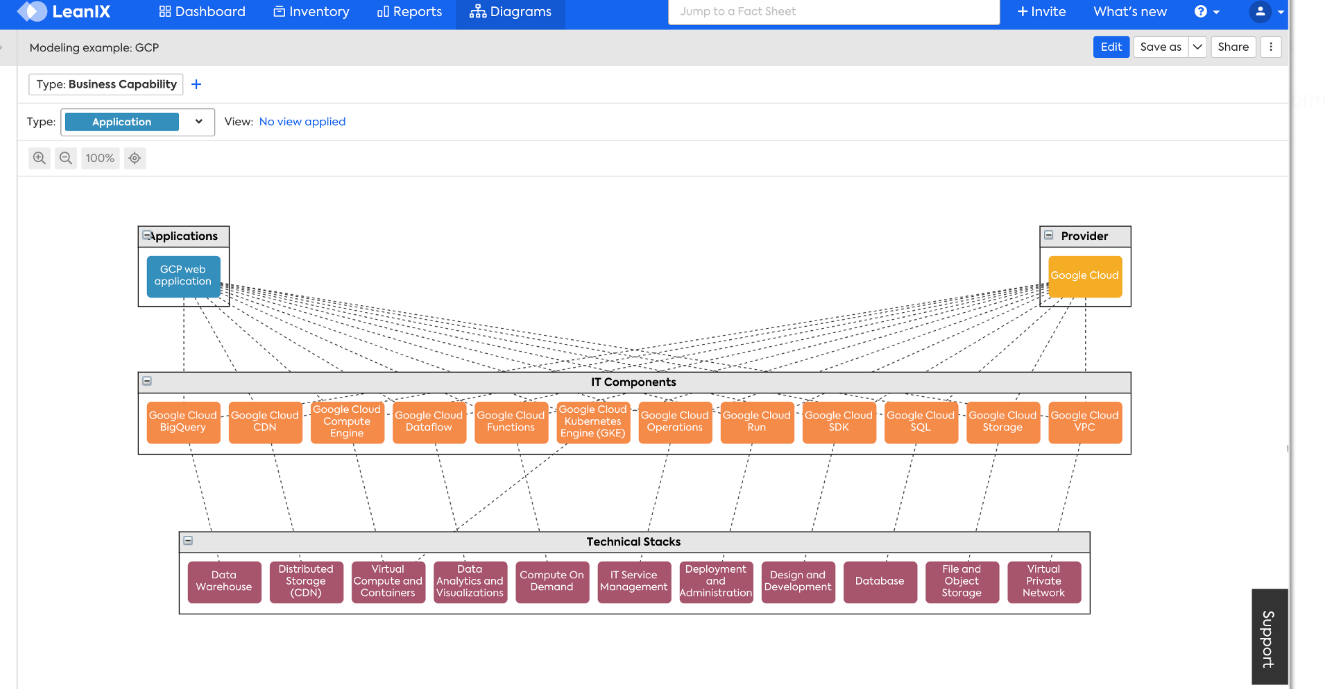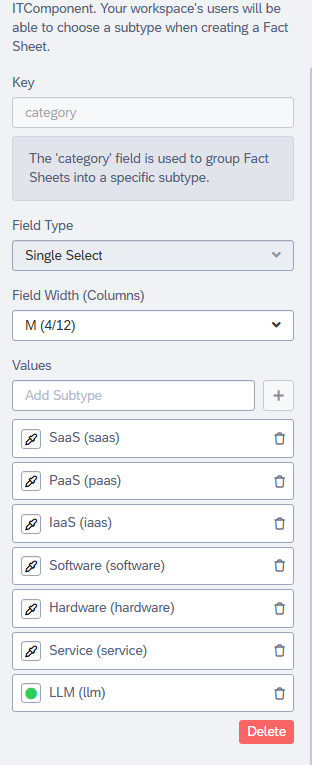Hi @monicaaugusto ,
for the example provided in the screenshot, the best practice would be to classify IT Components based on their function and align them with the appropriate subtypes you have in LeanIX. Given that the application is running on Google Cloud Platform (GCP) as a PaaS, the recommended mapping is:
Software (PaaS IT Components):
- Google Cloud Functions → Software (Serverless Computing)
- Google Cloud SDK → Software (Developer Tools & APIs)
- Google Cloud Dataflow → Software (Data Processing Service)
Infrastructure (IaaS IT Components):
- Google Cloud Compute Engine → Infrastructure (Virtual Machines)
- Google Cloud Kubernetes Engine (GKE) → Infrastructure (Container Orchestration)
- Google Cloud Storage & SQL → Infrastructure (Storage & Databases)
Services :
- Google Cloud BigQuery → Service (Managed Data Analytics)
- Google Cloud Operations → Service (Monitoring & Logging)
Also, it's recommended to Keep It High-Level & Reusable – Instead of mapping every single cloud resource, focus on key components that add real value, and If using multi-cloud or hybrid models, ensure standardization across AWS, Azure, and GCP, make sure your classifications follow the same logic to maintain clarity across your IT landscape.
Regarding the LLM, yes if you have an application supported by a specific LLM you can link it directly please refer to “AI Governance and Adoption” documentation for more details.





